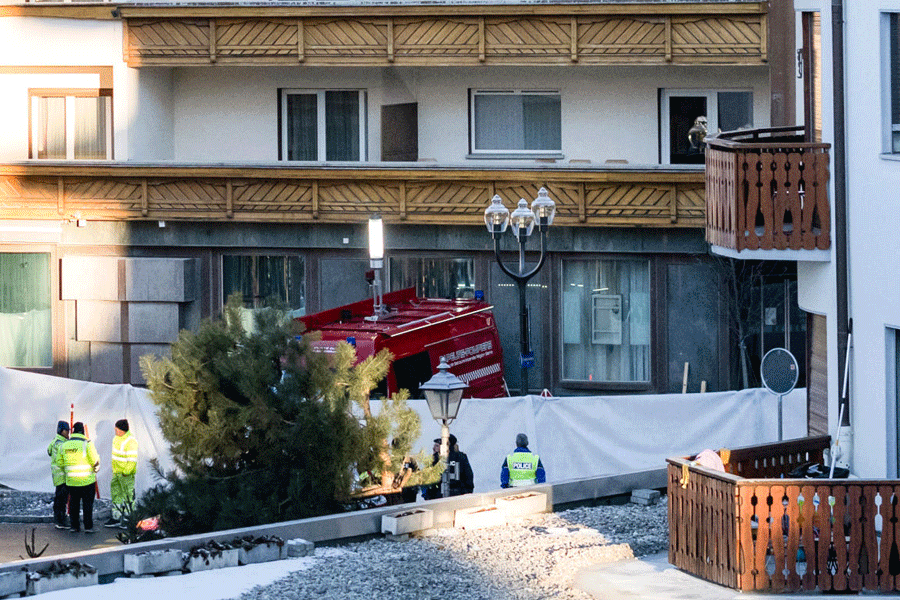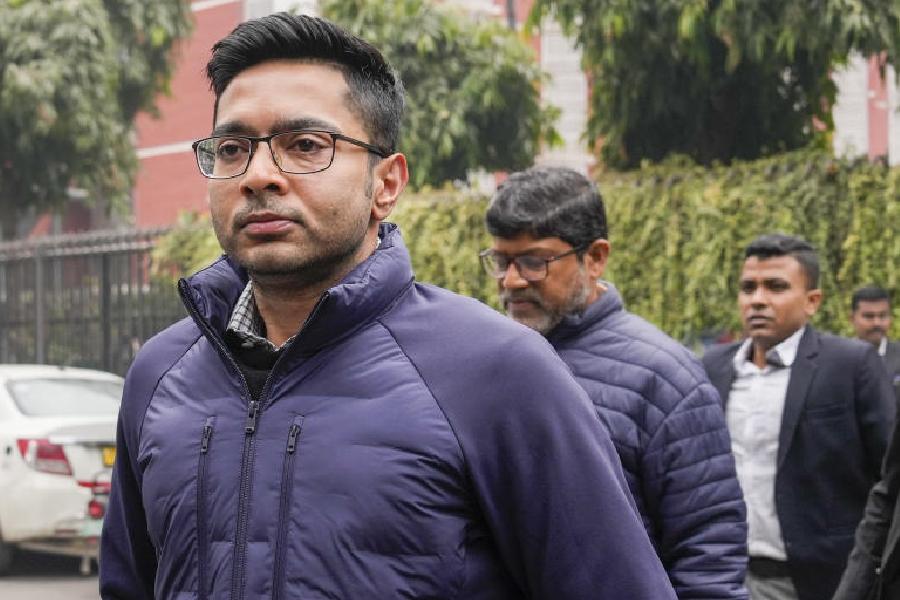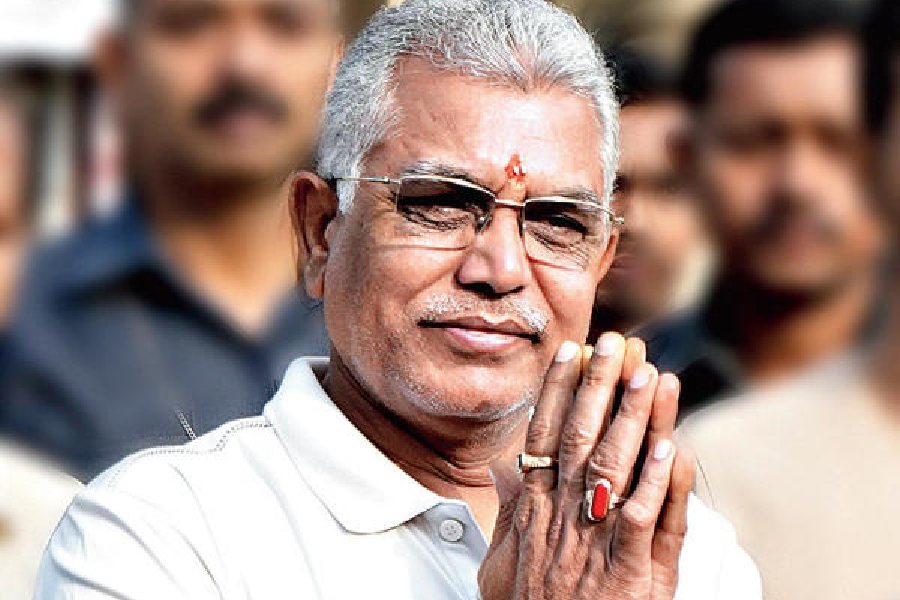Saptaswa Basu’s new series Dibakarer Odbhut Canvas, which streams from today on the Aaro Ananda app and the Aaro Ananda website, tells the story of Dibakar, a painter who comes to Calcutta in 1985 to take up a job, and Indra, a corporate guy who is working in an office in Calcutta in 2022. These two separate timelines somewhere get connected, and one painting made by Dibakar becomes the point of connection for these two characters. “The story talks about how both of them found love and lost it, and are on a journey ever since to redeem their own love stories. Arnab Bhaumik has designed the story and screenplay and he has also tried to explore a new genre through this series,” says Saptaswa. A Telegraph chat....
Why did you decide to pick this particular story for your web series?
For designing this series, we decided to experiment with a new kind of storytelling which will stand out and look different from the many content getting released every day throughout the Internet. Dibakarer Odbhut Canvas is a love story that takes place in both 1985 and 2022. One may assume it is something like Love Aaj Kal but it’s not and has quite a few twists along the way. Since I am working on a series-based project for the first time, I wanted to do a love story that will have a wider connection. People these days are very selective and impatient. If they do not like the first few minutes of a content, they will switch to a different one. We have tried to build a love story with some surprising turns and twists here and there that will keep the viewers hooked.
Why the title Dibakarer Odbhut Canvas?
The series is based on a story that has a canvas, or a series of canvases, as its central plot. It is through certain paintings of this canvas that the story unfolds. The poster and title have a sense of intrigue. It is a love story but it indicates that the canvas may not be a normal one. I loved this title while brainstorming, and it also reminded me of a short story by Satyajit Ray titled Gogon Chowdhuryr Studio. That one still remains one of my favourites. Telling a story in a short duration is a challenge. Here, I have treated each episode as a short narrative, each one has its arc and a moment of ending which leads one to the next episode. Each episode has a mysterious element related to a strange canvas and the climax justifies why we have kept the name in such a manner.
Who is Dibakar?
Dibakar is seen as a painter, who came to Calcutta around 1985 to take up a job in a reputed publishing house. Played by Debasish Mondal (who has played a double role in this series), Dibakar is depicted as a wide-eyed optimist, an innocent boy from a rural area, coming to a big city for the first time. He learns first and paints his interpretation of the world on his canvas. People from various age groups will relate to the character of Dibakar. He seems to be an underdog, struggling to get a job or balance his love life. At the same time, he is carefree and wants to live life on his own terms. He speaks less, unless necessary, and his means of expression is through his canvas. Dibakar finds bliss in his work, in his art. He does not attach importance to material possessions initially and as the series progresses we see a change coming over him.
What are the high points of the web series?
Each episode has its unique high point. We have shown in the teaser that the character of Barun Chanda is following the character of Debasish and also conversing with him at some point. This track of following one another is an important high point of the series, as the big reveal in the climax will justify the reason for such action. To name a few others, Dibakar’s journey to Calcutta, his love Binodini (played by Pooja Sarkar) waiting in the village for days, Indra’s confrontation with the “follower” (played by Barun Chanda) and the moment where the two separate timelines connect with each other through a painting, are the key moments and high points in the series.
Why cast Debasish, Barun Chanda and Pooja?
For the primary characters, I was looking to create a fresh combination of cast. Debasish Mondal has been doing good work consecutively. He has a lot of experience in stage and screen and I found him suitable to play the double role, Dibakar and Indra. Pooja Sarkar is quite popular among the new names who are working in this medium. I felt this new pairing of Debasish and Pooja will look good. Barun Chanda is playing a mysterious character, who is following Indra in the present timeline. Debashis Roy is also playing an important character. We have seen him in Aparajito and a few other acclaimed works and Debashis (Roy) has played the role of Dibakar’s uncle with elan. Lina Biswas and Ankita Das have played the other key characters.
As actors what did they bring to the table?
All the cast members have put forward their best game in the series. Barunda is the most senior among all but he blended with us in a spirited manner reminding us that age is really just a number. He thoroughly enjoyed the scenes and tried to add useful moments wherever he and I seem fit. We still have a lot to learn from such a personality. Debasish is a thinking actor. He tries to live the character that he is playing. I am sure his work will be appreciated. Pooja has depicted the rural girl of the ’80s very well. Debashis Roy played a role which is 15 years more than his actual age. Lina plays Sumedha, the love interest of Indra and she brought a childlike mannerism to her part that is often seen in this modern age of complicated relationships. Ankita, Mishor (Sohini) and others have executed their role in a mature process as well.
How did you decide to create the milieu for the different timelines?
This developed right from the screenplay design. We placed Dibakar in his own world of rural life, lost in his paintings. On the other hand, Indra belongs to a very mechanical work of corporate in the present time. Barunda is shown as a loner, a mysterious old man living alone and he is characterised by having a certain degree of voyeurism. Binodini is a simple village girl, who wants to have a settled life but Dibakar leaves her for the time being in search of a job in the city. Similarly, Sumedha has a break up with Indra as their relationship needed some space, So each character has their own setting, and the series makes them grow organically and connect with a greater reality of life.
What kind of colour palette did you use to differentiate the two timelines?
Segregating different timelines and lensing the scenes was quite a challenge. Our DOP Prabir Kr Sen and I scrolled through many images and colour shades before fixing the ones needed for the series. If one sees the storyline carefully, one will see there are actually more than two timelines. So we decided to go with a warmer colour palette complemented with off-white and brownish shades mostly and we tried to maintain it in costume and props. We also used warm practical lights such as tungsten bulbs to build Dibakar’s world for the ’80s part of the story. And for the present part, we used a comparatively cooler tone with a green tinge that immediately sets apart the two timelines. There is another timeline other than these two which a viewer will be able to understand after watching all the episodes. We tried to express it in an unusual reddish space as part of our treatment.
How was your shooting experience?
The shoot was a lot of fun. We shot extensively in Kalyani, both in the city and also travelled to a deeper zone in the rural areas. Since we are dealing with two timelines mainly and a lot of paintings, there are numerous VFX shots in the series. The technical team regularly sat with me each day before the start of the shoot to design a few tricky shots that add to the visual flair. We did not want to make it look very ordinary and insisted on dynamic visuals to tell the love stories of two separate decades.
What is your takeaway from the whole experience?
This is my first exploration into the world of web series. I have learnt from scripting and dividing episodes in a newer form of narrative and tried my hand to create visuals in a new aspect ratio (18:9) which is different from the ratio that we generally use in films. From lensing to editing, there has been a good scope for assimilating new factors. Overall, I would say that I have received a good amount of positive vibes from the experience and it will remain as a bright memory in my filmography for me.










